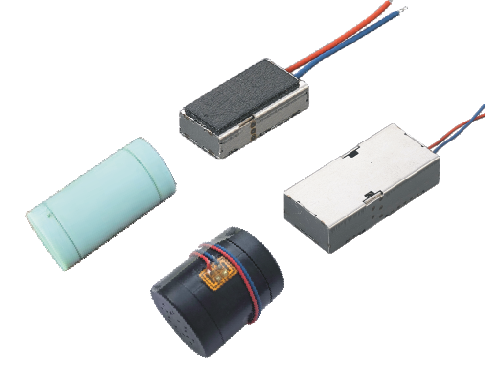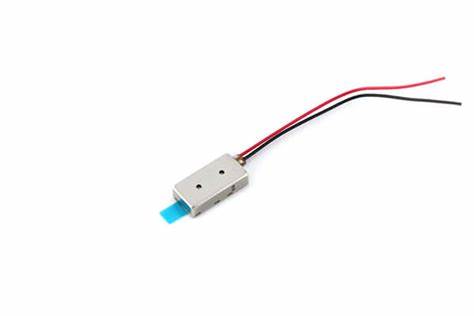Frequency Impact on LRA Vibration Motor Performance

Frequency impact changes how linear resonant actuators make vibration. When the motor runs at its resonant frequency, it can reach its strongest vibration. For example, LRA0832BE03L15 can hit 1.7 G at about 235 Hz with 1.8 Vrms. This resonance helps the motor work better and saves energy. Small frequency changes can change how strong the vibration is. Matching the load frequency, usually between 240 and 281 Hz, makes feedback better. Linear resonant actuators use exact frequency control to keep the motor working well in devices where strong, steady vibration is important.
Key Takeaways
When the motor's driving frequency matches its resonant frequency, the vibration is strongest and uses less energy. Small changes in frequency or things like temperature and aging can change how strong the vibration is and how well the motor works. Engineers use special tools like driver circuits and back-EMF monitoring to adjust the frequency and keep the vibration steady and efficient. Fast response time and exact frequency control help devices like phones, medical tools, and robots work better. Regular testing and tuning help the motor keep strong vibration and adjust to changes over time.
Frequency Impact
Frequency and Vibration
Frequency and vibration are closely linked in linear resonant actuators. When frequency changes, the vibration strength and pattern change too. This link is very important for how the motor works. Engineers study different frequencies to see how they change the motor’s vibration.
A lab test checked how spiders react to motor vibrations from 100 to 1,000 Hz. The test showed that frequencies below 1,000 Hz changed how spiders sensed and acted in their world. This shows why frequency and vibration matter in real life.
Researchers learned that vibration strength and frequency go up with more intense and longer stimulation. For example:
Longer and stronger stimulation makes the vibration feel stronger.
If frequency and vibration match, different settings can give the same vibration strength.
These results show that frequency and vibration work together to affect how the motor works in many uses.
Resonant Frequency
Resonant frequency is when the motor makes its strongest vibration using the least energy. At this point, the motor’s spring moves in a way that gives the best vibration and saves energy. Engineers use frequency tests to find this special point for each motor.
One study used fast cameras to watch needle movement and find the best frequency for a linear resonant actuator. The table below shows what they found:
Parameter | Value / Finding |
|---|---|
Optimized LRA frequency | 155 Hz |
Method of optimization | Visualization of needle motion with high-speed camera |
Sample size (surgically resected specimens) | 10 patients |
Sample size (thyroid nodules) | 254 nodules from 187 patients |
Comparison device | Eccentric Rotating Mass (ERM) device |
Diagnostic adequacy (inadequacy rate) | Both LRA and ERM achieved low inadequacy rates |
Number of large follicular groups | Significantly greater with LRA compared to ERM |
Conclusion | Optimized resonant frequency (155 Hz) enhances LRA vibration efficiency and improves sample quality for FNAC |
The table shows that tuning the motor to its resonant frequency makes vibration better and helps get better results in medical tests.
A technical article says that running the motor at its resonant frequency uses less power and makes stronger vibration. For example, LRAs can start vibrating in 5–10 ms, which is much faster than other motors. This quick start happens because the motor runs at the right frequency.
Off-Resonance Effects
If the frequency does not match the resonant frequency, the motor does not work as well. Off-resonance makes the vibration weaker and uses more energy. The effect of frequency is clear when the motor cannot reach its full vibration strength.
Early tests show that the natural frequency of a linear resonant actuator can change because of electromagnetic effects. This means frequency and vibration do not always follow simple rules. Engineers must look at these tricky factors when they study frequency.
Statistical tests also show that changes in frequency and vibration can change how people feel vibration strength. For example, different settings can feel the same if they make the same vibration strength.
A study on acupuncture found that higher treatment frequency made fewer people join clinical trials. The table below shows the results:
Variable | Odds Ratio (OR) | 95% Confidence Interval | P-value |
|---|---|---|---|
Treatment frequency (treatment regimen) | 1.54 | 1.02 – 2.34 | 0.04 |
This means that frequency can change how people feel and what happens in real life.
Note: Engineers need to study frequency carefully to stop off-resonance problems and keep vibration strong and efficient in their devices.
Performance Metrics

Vibration Strength
Vibration strength tells us how much force the LRA motor makes. Engineers measure this force in different ways. In one study, they tested robotic disks with LRA motors. They checked rotation angle, displacement, and how long the motor ran. The study found a link between the propulsive force, voltage, and phase shifts. This helped them see how vibration changes with different settings. The results showed LRA motors have weaker vibration amplitude than ERM motors. But LRA motors can control phase shifts better. This control helps engineers study vibration and make the motor work better in exact jobs.
Efficiency
Efficiency shows how well the motor uses energy to make vibration. Engineers check many things to see how efficient the motor is. They often test resonance frequency and vibration amplitude. They use a signal generator to find the best frequency for the motor. Driver chips help keep the motor at this frequency for steady vibration. Manufacturer datasheets give important details like voltage and current. Real-world tests show if the motor fits the device and saves energy. These steps help engineers pick motors that work well and use less energy.
Resonant frequency and vibration amplitude are important measures.
Testing with a signal generator finds the best frequency.
Driver chips help the motor run well.
Datasheets show voltage and current needs.
Real-world tests check energy use and how long the motor lasts.
Note: Engineers use both lab tests and real-world tests to make sure the motor meets efficiency rules.
Response Time
Response time tells how fast the motor starts vibrating after it gets a signal. Fast response time is important for devices that need quick feedback. Engineers use different ways to measure this. They check how long it takes for the vibration to reach its highest point after the motor turns on. The table below lists common performance metrics used in vibration analysis for LRA motors:
Performance Metric | Description |
|---|---|
Number of peak velocity points | Counts when speed goes above average during wrist movement. |
Average velocity | Mean speed during the wrist task. |
Average acceleration | Mean acceleration during the wrist task. |
Average trajectory deviation | Mean distance between actual movement and the target curve. |
Trajectory coincidence | Percent of overlap between actual and target movement paths. |
Intersected area of trajectory | Area where actual and target movement paths cross. |
Task execution time | Time taken to finish the wrist motor task. |
These metrics help engineers learn what affects motor performance and how to make it better. By studying vibration and response time, they can choose the best motor for each job.
Practical Considerations
Frequency Tuning
Frequency tuning is very important for strong and efficient vibration in LRA motors. Engineers use special tools to find the best frequency for each device. They often use driver circuits that watch resonance and change the signal. These circuits use back-EMF monitoring to keep the motor at the right frequency. Control methods like pulse-width modulation, overdrive, and braking signals help adjust vibration strength and timing. If tuning is wrong, devices might lose accuracy, move in ways you do not want, or waste energy. Studies show frequency tuning needs to change with the environment and how the device is used. For example, in robots, wrong frequency settings can make them work poorly or move in a shaky way.
LRA motors can quickly react to changes in frequency.
Overdrive and braking signals help the motor start and stop fast.
Driver circuits keep the motor at the best frequency for steady vibration.
Real-World Factors
Many real-world things can change the resonant frequency and affect how the motor works. Small differences from making the motors can change their resonance. As motors get older, the spring inside can wear out and shift the frequency. Temperature changes can also change how strong the vibration is. How the motor is put into a device can change its vibration pattern and frequency. Engineers have to think about these things when they test and study the motors.
Factor | Impact on Resonance and Vibration |
|---|---|
Manufacturing | Small changes can alter resonance |
Aging | Parts wearing out can shift frequency |
Temperature | Can change vibration strength and response |
Mounting | Can affect frequency and vibration pattern |
Note: Testing and checking the motors often helps keep vibration strong and control resonance in real devices.
Application Examples
Having exact frequency control is very important in many devices. Smartphones use LRA motors to give quick feedback when you touch the screen. Medical devices need accurate vibration for careful work. Robots use frequency tuning to move smoothly and work well. In all these cases, engineers study the motors to match the driving frequency to the motor’s resonance. This helps the devices work better and gives users a good experience.
LRA motors in phones give fast and clear vibration feedback.
Medical tools use steady vibration for more accurate work.
Robots need frequency tuning to move smoothly.
Frequency is very important for how well an LRA vibration motor works. When the driving frequency matches the resonance point, the vibration gets much stronger and the motor works better. Engineers need to test every motor to find the best frequency for it. They should check the motors often to see if aging or temperature changes the resonance. Keeping good control of frequency helps the motor give strong and steady vibration in real devices.
FAQ
What is the resonant frequency in an LRA vibration motor?
The resonant frequency is when the LRA motor shakes the most and uses the least energy. Engineers look for this frequency to help the motor work better and last longer.
What happens if the driving frequency does not match the resonant frequency?
The motor will not shake as much and will use more power. Devices might feel weak or slow. Engineers need to set the frequency to match resonance for the best results.
What factors can change the resonant frequency over time?
Getting older, changes in temperature, and how the motor is put in a device can change the resonant frequency. Small differences from making the motor also matter. Checking the motor often helps keep it working well.
What tools help engineers tune LRA frequency?
Engineers use driver circuits, signal generators, and back-EMF monitoring. These tools help them find and keep the best frequency for strong and efficient shaking.
What devices use LRA motors with precise frequency control?
Phones, medical tools, and robots use LRA motors. These devices need exact frequency control for quick feedback, smooth moves, or accurate shaking.
See Also
Maximizing Efficiency By Tuning Resonance Frequency In LRA Motors
LRA Motors As Key Drivers Of Today’s Haptic Feedback Technology
Effective Strategies To Enhance LRA Motor Performance In Designs
Maintaining Electric Vibration Motors To Boost Longevity And Efficiency
Exploring Resonant Characteristics Impacting Vibration Motor Functionality
Get Custom Micro DC Motors from
INEED Motors!
Leading Brand in Vibration Motor Manufacturing Industry
